The Lowdown on Lower-Unit Lubrication
Conversations about lower unit lubrication don't typically generate much interest around the launch ramp. That is until someone gets water in their lower unit and loses a gear case. It happens more than you may realize because all of the power and torque of your engine, turning at thousands of rpms, is concentrated on two small rotating metal surfaces. We’ve seen more than a few boaters spring for a whole new engine because of a blown gear case. Here's what you need to know about outboard lower units and why choosing the right lubricant is so critical.
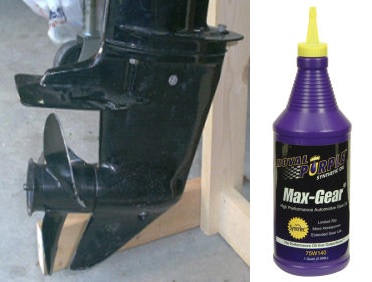
The Design Challenge
Modern outboard lower units use spiral-bevel gears designed with a curvature in their teeth. This design distributes the load over several teeth to increase the load capacity of the gear set, providing smoother, quieter operation. The downside of this design is the increased lubrication demand due to the sliding along the curved teeth. The sliding action increases friction and heat. These extremely demanding conditions require specific lubrication.
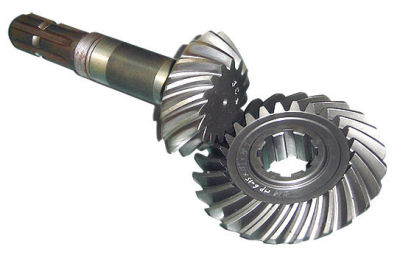
The Lubrication Challenge
Spiral-bevel gears require extreme pressure additives (known in the industry simply as EP additives) to handle the strain of increased shock load and high RPMs. It's important that a lubricant has adequate film strength to prevent the metal-to-metal contact that causes heat and wear. Film strength can be measured using the American Society for Testing Materials (ASTM) D-2782 Timken Load test. The higher the film strength, the less metal to metal contact. Performance lubricant manufacturer Royal Purple has gained a reputation for developing lubricants that possess very high film strength as exhibited in the chart comparing the results of the leading synthetic gear oil and conventional (mineral-oil-based) gear oil with Royal Purple's 'Max-Gear' gear oil.
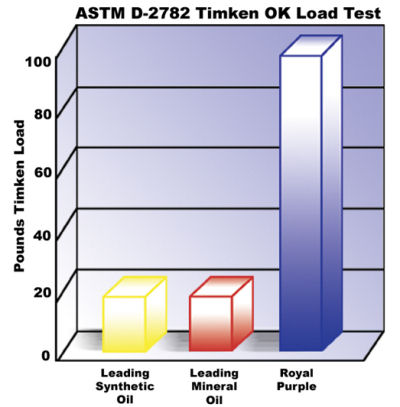
Important Note: Different gear oils cannot be combined. If you elect to switch gear oils you should make sure all of the old gear oil is completely drained out before adding the new gear oil. Each gear oil brand formula is unique; mixing two brands will result in a lubricant that is inferior to either of the two that you started with.
The Frequency
Most outboard manufacturers recommend changing gear oil annually or every 100 hours (whichever comes first). Some recommend shorter intervals when in salt water. At least one manufacturer, Evinrude, allows up to a 300-hour/3-year drain when using their particular HPF-XR oil. Regardless of the change interval, any accidental introduction of water into the system demands immediate attention.
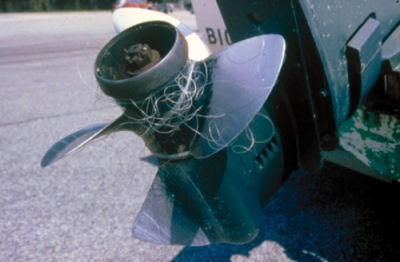
Water - The Unseen Enemy
Water in an outboard's lower unit often goes undetected until it's too late and expensive repairs are needed. One of the most common causes, particularly among anglers, is discarded monofilament line which gets wrapped around the prop shaft and damages the seals.
When water and oil are violently mixed, the emulsified mixture dramatically reduces the gear oil's ability to do its job. A lubricant's ability to rapidly separate from water indicates how well it will continue to lubricate if water is introduced to the system. (Regardless of how well and quickly a lubricant separates from water, it should be changed immediately if water enters the system.) The chart below indicates how well the Royal Purple gear oil separated from water when compared to the leading synthetic and conventional gear oils.
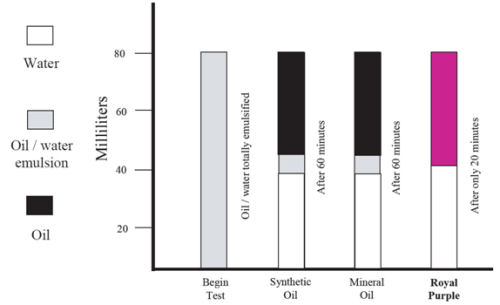
No one wants water contamination in their lower unit. Spending a few extra dollars for the extra protection from a high-quality gear oil is likely worth the peace of mind.
Royal Purple has over 18,000 dealers in the U.S. To find the closest dealer to you…
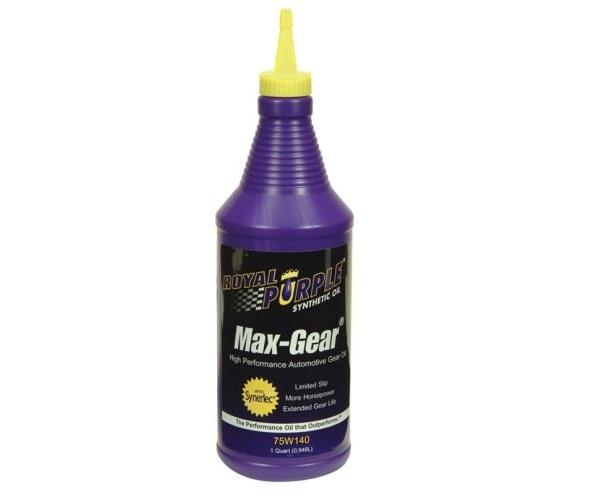
To find out more about its full line of products go to www.royalpurple.com.